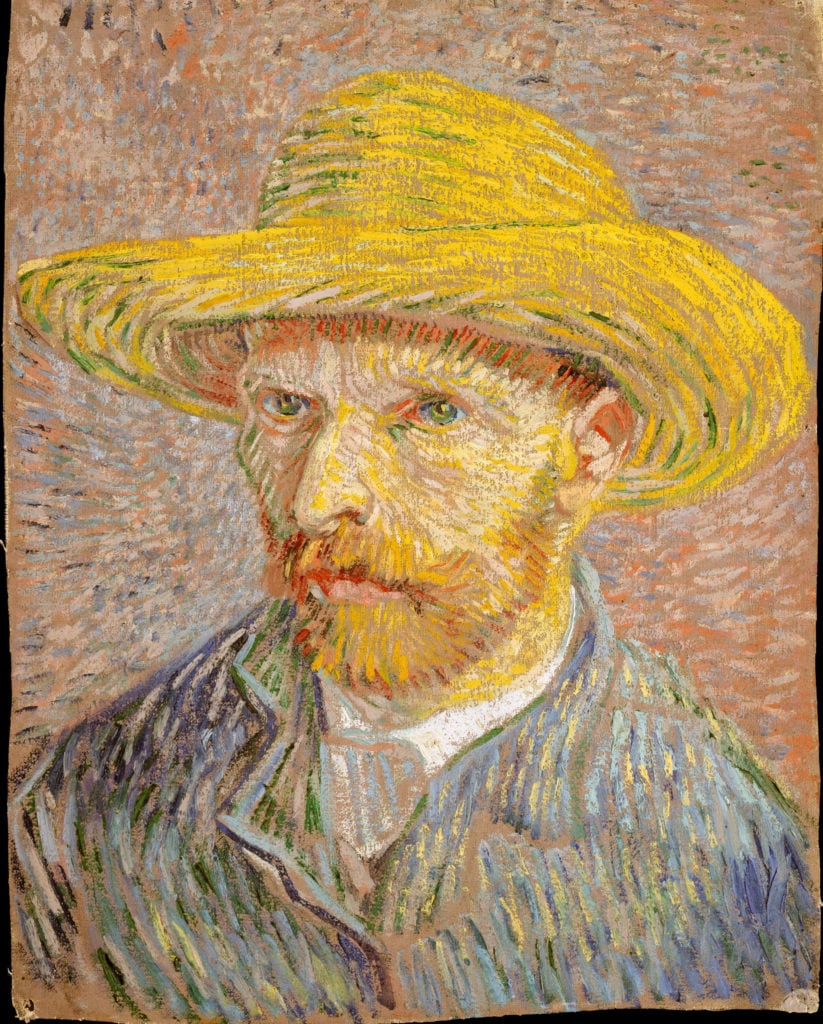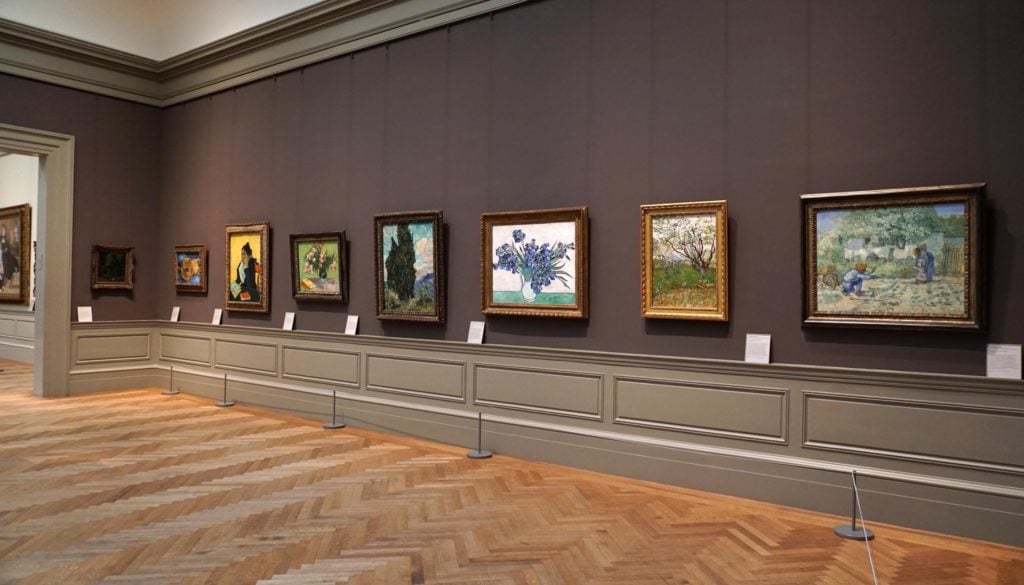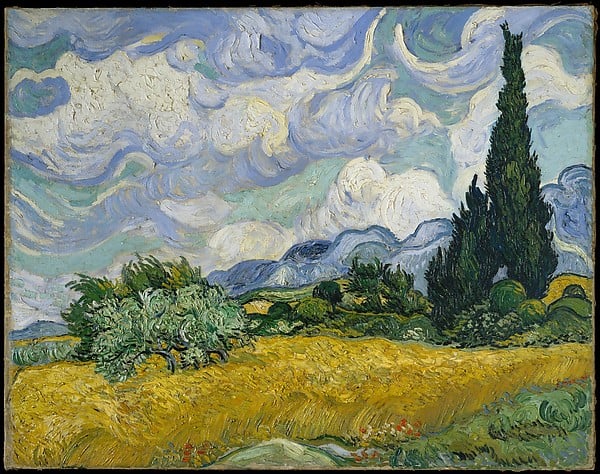On View
The Met’s Van Gogh Paintings Are Usually Off Touring the World. Now, All 16 Have Been Reunited in New York At Last
The Met offers a rare chance to see all the Van Gogh canvases in its European paintings collection.

The Met offers a rare chance to see all the Van Gogh canvases in its European paintings collection.

Sarah Cascone

Vincent van Gogh’s work is in such high demand for exhibitions around the world that it’s rare to find 16 of the Metropolitan Museum of Art’s paintings by the Dutch master at home together in New York at one time. But now, for the first time in four years, the Met’s full set of Van Gogh canvases from the department of European paintings are on view at the museum in galleries 822 and 825.
“In the spring, Van Gogh’s Oleanders [1888] returned from a three-venue showing of ‘Van Gogh & Japan,’ held in Sapporo, Tokyo, and Kyoto. Our L’Arlésienne [1888–89] was among the highlights of the [exhibition’s] Amsterdam venue, which just closed at the Van Gogh Museum in Amsterdam in late June,” said Susan Stein, the Met’s curator of 19th-century European painting, in an email to artnet News.

Eight of the Met’s paintings by Vincent van Gogh, currently installed in gallery 825. Photo courtesy of the Metropolitan Museum of Art.
Other paintings that have been traveling since all 16 Van Goghs were last seen together include The Flowering Orchard (1888) and Cypresses (1889). The latter made the trip to the Clark Art Institute in Williamstown, Massachusetts, for “Van Gogh and Nature” while the former visited the Ateneum Art Museum in Helsinki; the National Museum of Art, Architecture, and Design in Oslo; and the Statens Museum for Kunst in Copenhagen for “Japanomania in the North: 1875–1918.”
“Closer to home,” Stein added, “Van Gogh’s Irises [1890] and Sunflowers [1887] were included in the Met’s exhibition ‘Public Parks, Private Gardens: Paris to Provence,’ where they enjoyed their place in a gallery that traced the revival of flower painting in late 19th-century France.”

Vincent van Gogh, Irises (1890). Courtesy of the Metropolitan Museum of Art, gift of Adele R. Levy, 1958.
There are some Van Goghs, however, that visitors can always count on seeing at the Met. Self-Portrait With a Straw Hat (1887) hasn’t gone on tour outside of New York since its acquisition in 1967, due in part to conservation concerns. And the seven Van Gogh works from the Walter H. and Leonore Annenberg Collection, which include the masterpiece Wheat Field With Cypresses (1889), were acquired with the express provision that the canvases never be loaned out to other institutions.
Only one Van Gogh painting from the museum’s collection is missing from the new gallery hang: Madame Roulin and Her Baby (1888), which is actually part of the Lehman Collection and is therefore typically shown in the Lehman Wing, rather than in the European painting galleries. The canvas is about to go on view at the Frans Halsmuseum in Haarlem, Netherlands, in “Franz Hals and the Modernists” (October 12, 2018–February 24, 2019).

Vincent van Gogh, Wheat Field with Cypresses (1889). Courtesy of the Metropolitan Museum of Art.
The Met’s Van Gogh holdings also include six drawings, with one in the Lehman Collection and the rest in the drawings and prints department. The reunited paintings will be together on view through at least mid-February of next year. In a blog post, Alison Hokanson, the department’s assistant curator, called this a “not-to-be-missed occasion.”
All 16 Vincent van Gogh paintings will be on view at the Metropolitan Museum of Art, 1000 Fifth Avenue, New York, in galleries 822 and 825, through at least late February 2019.